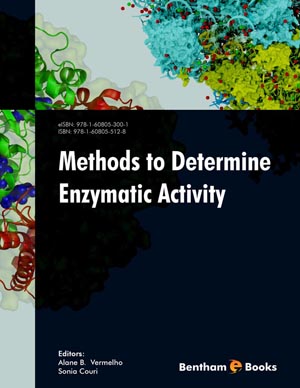Abstract
Lipases hydrolyze triacylglycerols to diacylglycerols, monoacylglycerols, fatty acids, and glycerol in their natural environment. However, in non-aqueous media, these enzymes catalyze reverse reactions such as esterification and transesterification. The versatility of the molecular structure and catalytic properties of these enzymes allow them to be used in various industries such as: food, cosmetic, oleochemical, pharmaceutical and detergent. Since lipases have several applications and have been the focus of numerous research studies, this chapter contains the guidelines for screening of microorganisms that produce lipases and for meticulous enzymatic analyses, focusing on the need to standardize methods in order to compare the catalytic efficiency of lipases obtained by different sources in distinct laboratories.
Keywords: Lipase, esterase, triacylglycerol, fatty acid, microorganism, titrimetry, spectroscopy, screening, enzymatic index, hydrolysis, esterification, synthesis, p-nitrofenil palmitate, olive oil, cupric acetate, rhodamine B, tributyrin, triolein, oleic acid.






















